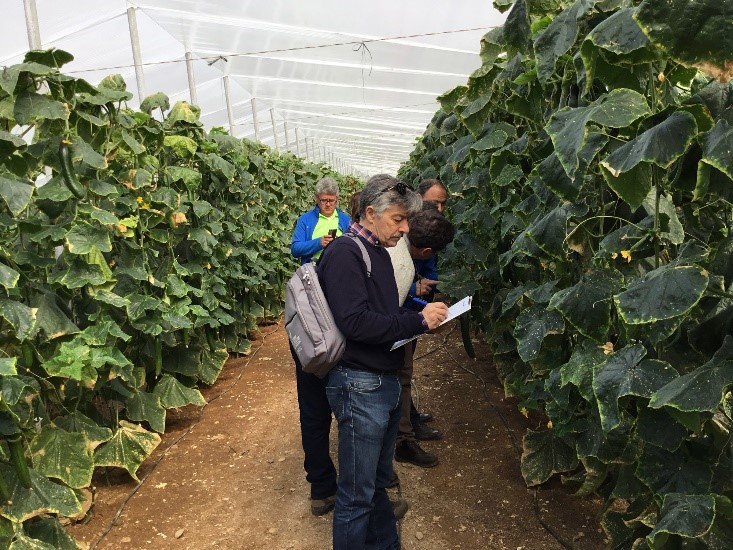Southeast Asia Regulatory Update: Food Production, Nutrition Security Bolster Need for AgChem
Pesticides are applied widely in Southeast Asia, not only to ensure food security and feed a growing population but also to protect human health against vector-borne diseases. Looking at the pesticide registration legislation, many countries have experienced problems in the enforcement of their legal provisions. The political and economic developments created a wide range of private sector activities in the field of pesticides.
Pesticides started to be produced or formulated in various Southeast Asian countries and they became an increasingly important economic trade factor. While most products were imported from Europe, Japan, and the U.S., they are increasingly imported from neighboring countries such as China and India. Such a situation requires effective national pesticide management capacities.
Among Southeast Asian countries, there is no harmonization system. Each country has its own pesticide registration legislation. It is important that each country finds the right balance between too little and too much regulation. Otherwise, for the company that is looking for a regional strategy on registration, there would be much duplication of efforts and high costs for the industry and governments. An efficiently regulated and managed pesticide registration scheme is a prerequisite for ensuring that pesticides used in the country are useful for controlling pests and would not cause adverse effects to humans and the environment.
Demand Still Strong Despite Tightening Regulatory
Considering the situation in Southeast Asia, there is an increasing need for food crops due to the rise in population in the region. Additionally, in Southeast Asian countries, the arable land per person is decreasing at an alarming rate where the use of pesticides can play an important role in increasing the average crop yields per hectare. Both government and private initiatives, which encourage growers to use the right amount of pesticides and apply properly, are increasing the awareness of overuse of pesticides among the farmer community in the region. The increasing demand for agricultural products and the resultant commercialization of agriculture induced a rising use of agricultural chemicals in the region.
Promoting Biopesticides
The increasing impetus provided by the demand for safe and healthy food has provided the required fillip to the nascent biopesticides market in the region. With regional regulatory authorities promoting biopesticide usage through regulations, policies, and schemes, the demand for biopesticides is expected to increase during the forecast period. Specifically, the demand for bioinsecticides in the region is expected to increase in the coming years.
The precise details of how the regulatory framework is defined and managed vary among Southeast Asia countries and, in many cases, reflect historical influences. The need for updated legislation across many different areas may lead to congestion in the schedule of the lawmakers, and ministries then have to decide on their priorities. In these cases, it may be easier to amend the existing law rather than create a new one, but this risks making the law less accessible and understandable.
Many Southeast Asia countries have seen the need to update their registration regulations in recent years to reflect changes in the agricultural business sector, but progress varies widely. The legislations in all countries regulate conventional and biological pesticides, however, the registration of biopesticides is only partially implemented in some countries. Biopesticides are regulated by systems designed originally for conventional pesticides that have created market entry barriers by imposing burdensome costs on the biopesticides industry. There are also significant technical barriers to making biopesticides more effective.
Some countries like Thailand, Malaysia, or the Philippines have a clear guideline on requirements for the registration of biopesticides, and in 2020 we see the increase of the registration approval for biopesticides in several Southeast Asia countries.
From the time of the Green Revolution, pesticides still gained a political dimension, with conflicting views about the pros and cons. Governments are aware of the political sensitivity of pesticides and have sometimes provided subsidies to win the support of farmers or to influence decisions about the crops they grow and the non-chemical use of pesticides.
Economically competitive biopesticides of good quality are rarely available in the Southeast Asia market. As soon as farmers, including smallholders, get better profits for pesticide-reduced or organic produce, market prospects are likely to improve considerably.
Chemical Pesticide Ban: Paraquat, Chlorpyrifos, and Glyphosate
Many countries have already prohibited paraquat and chlorpyrifos. Paraquat has been banned in 53 different countries around the world, including China from 2020. Several Southeast Asian countries such as Cambodia, Laos, Malaysia, and Vietnam have followed suit banning use of paraquat. Furthermore, Thailand imposed a ban on the insecticide chlorpyrifos, and the herbicide paraquat from the beginning of June 2020.
Thailand kept glyphosate a restricted use pesticide while banning paraquat and chlorpyrifos. The ban was initially proposed in October 2019, when the country also intended to include glyphosate in the prohibition, but it subsequently decided to drop the plan to ban glyphosate. There has been some confusion on the status of glyphosate as the effective date of the ban of the other two substances approaches. Due to glyphosate’s status as a restricted pesticide, the exports to Thailand should face no trade disruptions with respect to glyphosate. Vietnam allows the use of glyphosate-based herbicides until 30th June 2021. Indonesia banned chlorpyrifos, but paraquat remains a restricted pesticide, similar to the Philippines.
The governments in these countries are working on the disposal procedures for any remaining stocks of the banned substances like paraquat and chlorpyrifos, and measures to cover dramatically higher costs of pest control for farmers who are troubled by this ban. The ban will affect several domestic industries as the countries rely on the importation of several agricultural commodities, and international trading of fruit and vegetable products could face disruptions in their supply chains once the ban goes into effect.
In addition, disruption in these industries could negatively impact their customers’ supply chains, such as bakery manufacturers, food processors, and hospitality industries. Governments are trying to find alternatives to chlorpyrifos and paraquat so as to cushion the financial impact of the prohibition on farmers. While the world is focusing on food safety, businesses and farmers are not yet ready and many are also adversely hit by the Covid-19 outbreak. If the chemical residual value is reset to zero, then there will be a severe shortage of raw materials as well as a food crisis in Southeast Asia. Banning the import of these chemicals will have a wide impact as they are used in the cultivation of plants that are used as raw materials for processing both human food and animal feed like soy, wheat flour, coffee, cocoa, etc.
Growth of Pesticide Market in Southeast Asia
In 2020, the pesticide market in Southeast Asia was revived and the industry was dramatically revitalized. Glufosinate was identified as an alternative to replace paraquat in several Southeast Asia countries. Herbicides in general are in high demand including glyphosate though it is a restricted pesticide. Growth in the insecticide market in this region can also be noted and several new registration licenses have been approved by the governments. Plant growth regulators (PGR) such as paclobutrazol (PBZ), or ethephon are in demand in this region. While products with purely fungicidal effect are stable but may gradually decrease due to the price competition between companies within each country. A shortage of raw materials and products might occur together with transportation interruptions. The industry could see more significant supply disruption for agricultural chemicals. This leads to higher prices for such inputs.
New Active Ingredients
Several new active ingredients were registered in key Asian countries such as China, Australia, New Zealand, Japan, and India in 2020. Nihon Nohyaku completed the registration in Japan in September 2020 of its two innovative insecticide products, Orchestra flowable and Orchestra dust formulation, which are based on the new active ingredient, benzpyrimoxan. The company plans to launch Orchestra flowable and Orchestra dust formulations in Japan in May 2021 and in India in 2023.
In addition, it is considering expanding the registration of these products in Southeast Asian countries and planning to develop and promote them globally. Another example is cyproflanilide created by CAC Nantong Chemical Co. Ltd. At present, the company has applied for a patent for this compound in 16 countries and regions, including China, Europe, Japan, South Korea, the U.S., Australia, Vietnam, and the Philippines. China, Japan, and Australia have approved the applications.
In Southeast Asia, the development of new active ingredients for pesticides remains difficult though several countries such as Thailand or Indonesia, which have new procedures to evaluate the information of new active ingredients. The process takes a much shorter time than before in order to give approval and add the new active ingredient to the national list of pesticides that allows being registered.
By solving basic problems one by one, new application requirements have been continuously raised, such as resistance management, safety, and environment-friendliness, product utilization rate improvement, and biodiversity protection. It becomes increasingly difficult to find new pesticide ingredients, resulting in requiring more time and higher costs in terms of new product research and development.
However, products developed and approved under these conditions taking the more and more complex requirements into account benefit from a prolonged overall life cycle. It is expected that after the new active ingredients were approved in the manufacturing countries, industries may consider “Southeast Asia” as the next target region for the registration since pesticide use is in high demand in this region. Farmers in this region still heavily rely on pesticides for managing pests and diseases as pesticides have significantly boosted crop production.






